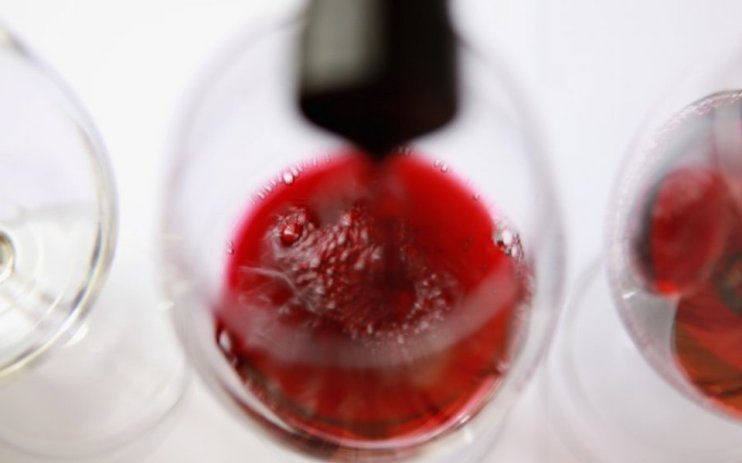The A-Z of wine: D is for… Douro

HOW DO YOU PRONOUNCE DOURO? doer-oh
WHAT’S THIS THEN? An iconic, strikingly beautiful Portuguese wine region, best known for being the home to Port, the fortified wine that we all claim to love, yet usually only buy once a year. More specifically, the Douro is the wine region around the river of the same name (known as the Duero just across the border in Spain), which carves a path through wine country and is critical to viticulture in the region, both in terms of creating a range of vertiginous vineyards and also for facilitating the movement of wine from the estates upstream down to the port houses themselves in the also stunning city of Porto, from where they’re often matured and then released for export. Did I mention that it’s ridiculously beautiful? Because it is.
WHY DOES IT MATTER? This could easily have been a story of why it doesn’t matter – consumption of fortified wines has been slowly dying over the past couple of decades, as much as aficionados try to keep the fires burning, and the Chancellor’s recent budgetary proposals to levy duty by alcohol volume will surely be the final nail in the coffin of some glorious but sorely undervalued drinks.
However, like all great wine regions the Douro has been reinventing itself, refocusing instead on producing some seriously good table (ie, unfortified) wines of all colours and table wine production now makes up over a third of total production in the region, in spite of Port’s historic dominance.
Great Douro table wines are nothing new: the Romans (but of course! Rarely is a European wine story complete without some reference to the Romans) recognised the grape-growing capacities of the area, and slightly more recently top producer Casa Ferreirinha introduced their iconic, limited release red Barca-Velha in the 1950s- a bottle of which will set you back around £500 for current release. Clearly, therefore, there’s more to the Douro than Port.
WHAT DOES IT TASTE LIKE? Weirdly, not like Port. Think of Port’s calling cards (that is, Ruby, LBV or Vintage styles) – punchy alcohol, super-ripe fruit and an unavoidable degree of sweetness – and modern, quality Douro reds are increasingly if not diametrically opposed, then at least moving in the opposite direction.
Instead, winemakers are seeking to amp up the wild herb, cool earth and floral characters that are usually inherent in the region’s indigenous red varieties but often lost through over-ripeness. There’s a strong tradition of blending here, so don’t expect to see a single variety mentioned on the label – instead the wines are often ‘field blends’ of mixed, co-planted varieties from a single or multiple vineyards.
Most will generally involve Touriga Franca and Touriga Nacional in some way, which bring ripe dark fruit and an earthy, floral character (think violets) whilst Tinta Roriz – better known as Tempranillo in Spain – is also heavily planted. Field blending also often brings a small percentage of white grapes into the mix, which can add to the fresher, more aromatic character.
That’s not to say these are by any means thin or underpowered – the Douro is generally achingly hot and dry, and the challenge is to manage ripeness and power rather than seek it, in many ways similar to the challenge faced by producers in the Rhone valley in France. Douro whites (Branco) also bear investigation.
These range from clean and aromatic style – a great summertime sipping alternative to Albarino or Picpoul – to more serious, full-bodied wines that can have more in common with Pouilly-Fuisse than seaside Porto. ‘Reserva’ on a white label will generally indicate the latter approach.
SOUNDS GREAT – WHAT DO I BUY? Prats & Symington ‘Altano’ range (widely available around £10) is a great introduction to what the Douro is all about at an entry level. Their white is a good any day option, but the potential for quality Douro white is well shown by Quinta da Silveira’s Reserva Branco (Davy’s, £20.95) which is now over eight years old but still drinking deliciously.
The ‘Manoella’ red from Wine & Soul (£19, Corney & Barrow) also takes things to the next level, with the boutique producers using century-old, organically farmed vines. One half of the Wine & Soul project, Jorge Borges, used to work for the iconoclastic Dirk van der Niepoort who can make wines at both ends of the Douro spectrum – from the intense, rustic and wild ‘Robustus’ (not readily imported in the UK but available for import around £55) to the elegant, chewy and refreshing ‘Voyeur’ (Noble Green Wines, £24) which is more Pinot Noir than Port.
And if you’re looking to get a taste for the Douro’s full power (but don’t fancy stumping out £500 for Barca-Velha), then seek out Casa Ferreirinha’s Reserva Especial (Hedonism have the 2009 vintage at £169) which is sure to dispel any remaining doubt over the Douro’s delights.